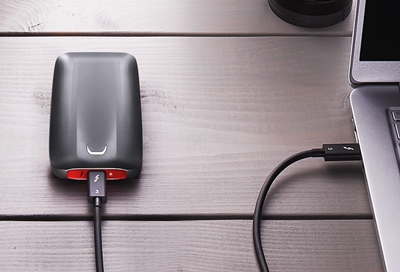Avoid data loss on your Samsung SSD

Solid state drives (SSDs) can be much faster and more reliable than traditional hard disk drives (HDDs). However, they occasionally still have problems and can even fail. Here are some tips for managing data, preventing data loss, warning signs that an SSD is going bad, and some suggestions for recovering or restoring data if your SSD does fail.
Preventing Data Loss
Back up your data
Never put all your eggs in one basket. Even though hard drives last a long time, you never know when theft, damage, or other scenarios may happen, so it makes sense to have your most precious data (like pictures and memories, or important documents) in more than one place. Many online services offer cloud backup options as well to automatically back up your data so you don't even have to remember to. All you have to do is sign up and turn it on.
Check the health of your SSD
Download and install Samsung Magician to examine the health of your SSD. You can check the S.M.A.R.T status, which hard drives use to report when they are beginning to fail. You can also update the firmware if an update is available, and certain models can also run a diagnostic scan. You can also benchmark your hard drive periodically and compare its performance with past benchmarks to see if it's still performing well.
Need additional support? There are options available:
Email: samsungmemorysupport@sea.samsung.com
Live Chat 12pm - 6pm EST (Monday - Friday): https://www.livehelpnow.net/lhn/lcv.aspx?d=34834&ms=&zzwindow=0&lhnid=29783
Warning signs that your SSD is failing
Fails to save, move, or read files: If you try a move a file and receive an error message saying that it could not be moved, or that a file could not be read or saved, you may want to run some repair software. The drive may just have some corrupted files, but it's also a sign that there is damage.
Computer crashes on boot up: If your computer crashes when booting up, but after rebooting a couple of times it starts to work, this could indicate a problem with your SSD. You can run the repair software, and even try reinstalling your operating system, but this could mean your SSD is close to failing.
Has S.M.A.R.T. errors: The easiest way to check your Samsung SSD for errors is to download and install Samsung Magician software. Then, open the program, go to Drive Details, select your SSD, and click the S.M.A.R.T. button. If any of the tests show anything other than OK in the Status column, your hard drive is close to failing. While using Samsung Magician, some models of SSD can also run a Diagnostic Scan for more information.
Recovering data from a failed SSD
It can be difficult to recover much data from an SSD that has actually failed. That's why it's important to keep backups and know the warning signs. However, there are a lot of third party data recovery software programs available for you to try to recover it yourself, or look for a data recovery service.
-
Mobile 8 AM - 12 AM EST 7 days a week
-
Home Electronics & Appliance 8 AM - 12 AM EST 7 days a week
-
IT/Computing 8 AM - 9 PM EST 7 days a week
-
Text Support 24 hours a day 7 Days a Week
Contact Samsung Support


